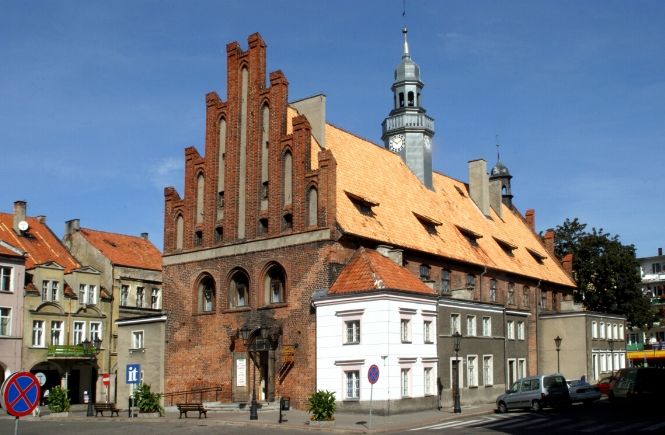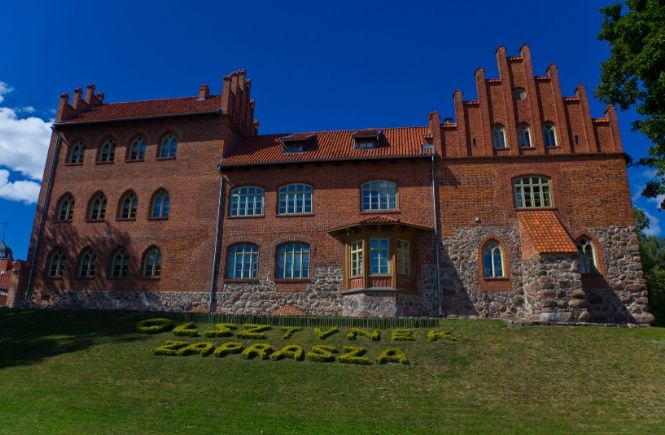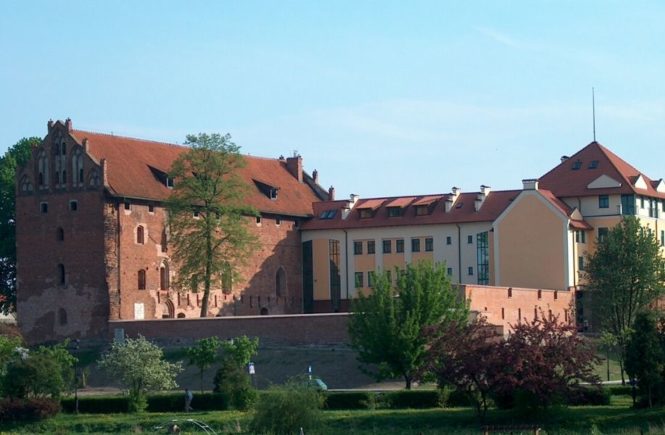Gothic is historically the dominant architectural style in Varmia and Masuria. It is the architecture of various secular and residential buildings such as castles and churches. In the region there are around 45 castles, 31 Teutonic castles and 14 castles which were the seats of bishops’ chapters. 15 out of 22 regional Cittaslow towns have castles in their history. A few of them still function in all their glory. Some castles such as the Bishops’ Castles in Lidzbark Warminski and Reszel function as museums and a hotel. The Teutonic Castle in Ryn is a hotel now, [At first Procurators’ Commandery Bałgijskiej-presently Kaliningrad Oblast] the Castle in Nidzica is a centre of culture and the Castle in Działdowo combines an administrative function of The Town Hall with a museum, the Museum of Borderlands -Facebook.

fot. arch. UMWWM
Some other castles have fallen into ruins over the ages and often the only thing that has survived are cellars. This is the case in Orneta (www.orneta.pl). This castle was built between 1341 and 1350 as the headquarters of the Church but this function was later moved to Lidzbark Warmiński so in 1350 the Castle in Orneta lost its significance. In 1809 the castle’s walls, utility rooms and two wings were pulled down. In 1890 school buildings were constructed on their foundations. The School still functions till today and gothic cellars have been transformed into cloakrooms and you can visit them on school days. The town has a medieval urban layout with a Gothic Town Hall, rebuilt old trade buildings and St. John the Baptist’s Church.

fot. S. Harajda
fot. arch. UM Lubawa
The gothic cellars of Varmian Bishops’ Castle are preserved till today in Jeziorany (www.jeziorany.com.pl). The castle was built in the middle of the 14th century and destroyed at the end of the 18th century when a great fire engulfed the whole town. All that was left were 3-metre thick walls and cellars which were transformed after 1945 into a meeting place for scouts, then a cafe and now they are used by the Town Hall. St. Bartłomiej’s Church a gothic monument dating back to 1390 house great organs which are worth listening to if you get the chance.
The Teutonic Castle in Olsztynek (www.olsztynek.pl) was Ostróda commander’s district headquarters. In 1843 it was a school, later on teachers’ seminary and state school. Emil von Behring, the first Nobel Prize winner for medicine (1901) for using antiserum against diphtheria was a graduate of Olsztynek gymnasium. Nowadays it is renovated and named after K.C Mrongowiusz who was born here. Near the school there is an old evangelical church which presently functions as the Art Gallery of Civil Engineering Museum.

fot. arch. UMWWM
In Braniewo (it.braniewo.pl), the oldest of 12 Varmian towns that received its city rights in 1254 and a Bishops’ Castle was built in the same century. When the Bishops’ capital city was moved to Orneta in 1341 and the Seat of the Charter was moved to Frombork the castle’s importance was largely reduced. In 1811 the castle became the Pedagogy Institute for Varmian Teachers of Primary Schools and the walls were adjusted to its new function. The school was burnt in 1945 by the Red Army and the ruins were taken down in 1958. Only the gate tower that covered the two-storey chapel with a star vaulted ceiling survived. Close to the gate there is St. Katarzyna Aleksandryjska’s Minor Basilica but most of the church was blown up in 1945 and only the southern side of the church, part of the northern side, the eastern choir and one of the pillars survived. The rebuilding which lasted 7 years started in 1979.
In Nowe Miasto Lubawskie (www.it.nowemiasto.pl) there was no castle but there was the Teutonic Castle in Bratiany situated 4 km from Nowe Miasto Lubawskie. On the 8th of November 1343 there was a meeting of Mazowiecki dukes with the Grand Master of the Teutonic Order to define the territories of Mazowsze and the Teutonic State. It was in Nowe Miasto Lubawskie Town Hall building where this event took place, today there are just few ruins left. The gothic St. Thomas the Apostle’s Basilica is where the gothic grave of the Teutonic knight, Kunon von Liebenstein who died in 1391 can be seen and two ancient gates, the Brodnicka gate and the Lubawska gate are worth seeing as well. The castle in Lubawa which was the seat of the Bishops of Chełm from the 13th to the 17th century is now being restored and changed into a Social Activity Centre. A little curiosity, the famous and great Mikołaj Kopernik paid a visit to the castle.

fot. arch. UMWWM
Teutonic knights were obliged to stay for a night inside the walls of castles for security reasons that is why the castles were built within less than one day’s horse ride from each other, about 30 kms. Today the distance is good for a nice bike ride so why not consider a grand tour of visiting gothic curiosities in Cittaslow towns.
by Stanisław Harajda




